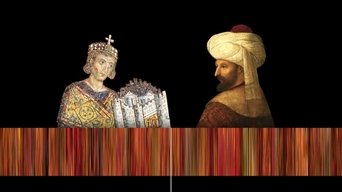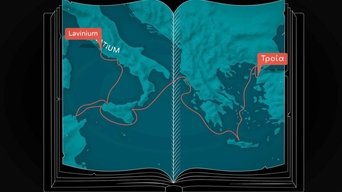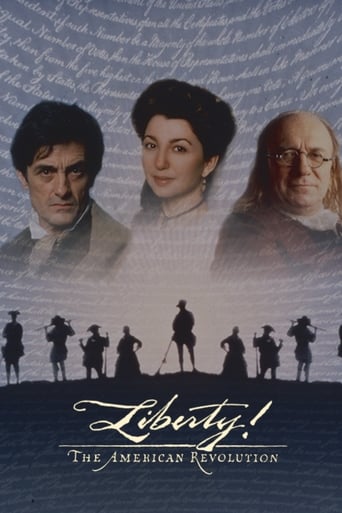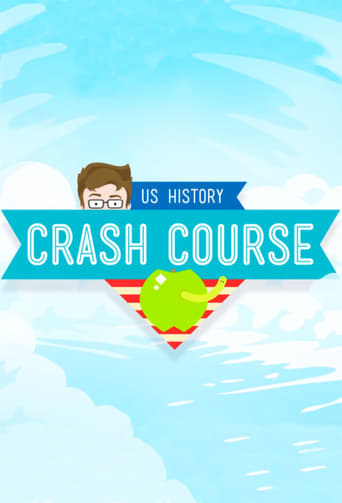Dates That Made History Season 2

Historian Patrick Boucheron revisits the most important dates in history through the prisms of memory and collective imagination.
Watch NowWith 30 Day Free Trial!
Dates That Made History
2018 / TV-PG


Historian Patrick Boucheron revisits the most important dates in history through the prisms of memory and collective imagination.
Watch Trailer
With 30 Day Free Trial!
Dates That Made History Season 2 Full Episode Guide
Before the attacks of 2001 took its place, September 11 was associated with another global event: that of the overthrow of the socialist government of Popular Unity by the Chilean armed forces, supported by the American secret service, in 1973.
Apart from Tolstoy's readers, few people actually know about the battle of Borodino, fought some 100 km from Moscow. Even today it remains a landmark and symbol of the Russian resistance to the invader Napoleon Bonaparte.
On April 21, 1526, the little king of Kabul Babur boldly took northern India from the Sultan of Delhi, Ibrahim Lodi. With his victory, the time of the second Islamization begins, which will spread to the shores of Indonesia.
In the middle of the 8th century AD, in the heart of Central Asia, on the borders of present-day Kazakhstan and Kyrgyzstan, a battle without victors was fought.
The Arab chronicles of the fourteenth century bristle with a rumor: from the farthest lands to the west of the known world, across the Sahara desert, a black emperor and his court crossed the lands of Islam on a pilgrimage to Mecca, staying in what was at the time the capital of the Islamic world, Cairo.
What if Blake and Mortimer had been right in the Mystery of the Great Pyramid? The history of the seventeen-year reign of Akhenaten, the 10th Pharaoh of the 18th dynasty, sometimes still seems to be a real historical mystery.
What happened in the year 1000? Nothing: this date does not correspond to any major event. The passage from the first to the second millennium was not really an event for those who lived through it. The infamous “Terrors of the Year 1000” were largely an invention of 19th century Romantic historiography.
The American revolution is sometimes watered down to the point where it can become an almost silent revolution.
The capture and looting of Emperor Qing Xianfeng's two summer palaces in Beijing (Peking) was the culmination of the Second Opium War; pitting the colonial powers of France and the United Kingdom against China. Yet it was also a double-edged sword.
The expression “Spring of Nations” inspired the more recent “Arab Spring” of 2011. Also known as the Springtime of the Peoples, the period was characterized by a cascade of national claims. However, these movements had difficulties in coordinating, for the simple reason that these movements first of all stemmed from a desire to draw definite borders, rather than to open them.
On October 17, 1961, at the call of the FLN, 20 to 30,000 Algerians from France peacefully marched through Paris. 12,000 people were arrested. The round-up, organized by the police prefect Maurice Papon, was followed by very brutal abuses and numerous disappearances.
On 25 August 1270 Louis IX died on the hill above Carthage. He was the only king in the history of France to die outside of national borders; even worse, on non-Christian soil. This day was a milestone in the career of a saint in the making. Even though the canonization of Saint Louis did not take place until 27 years later, in 1297.
Why was Socrates condemned by the city of Athens? Was the figure of the master thinker, who could subvert the youth, really a danger to a Greek democracy that was more idealized than it was understood?
The assassination of Henri IV, peacemaking and reformist king, is as much a canonical scene in the History of France as it is a decisive break in political modernity. And first of all because it is a newsworthy event with an almost global dimension. We know that its spread to the “four corners of the world” is an indication of an open, if not connected, world.
In 1911, the expedition led by the Norwegian Amundsen reached the South Pole, beating the British Scott to the punch. The story of the conquest of the poles is the last chapter of a long epic, closing the age of the great scientific explorations that began at the end of the 18th century and became extraordinarily popular since the end of the 19th century.
Despite its worldwide fame, Lascaux is no longer considered to be the “Palace of Versailles” or the “Sistine Chapel” of prehistory, and is no longer considered to be the place of invention or creation of art. What if Lascaux was actually from a “Middle Ages” of prehistoric and human art?
The fall of Constantinople marked the end of the Byzantine Empire – a power descending from none other than ancient Rome. Its symbolism has long since transcended its actual significance.
In the middle of the 8th century, the chancellery of the bishops of Rome was on the verge of becoming a spiritual heir to the Western emperors. That was when it committed the most important forgery in the history of the West.
The defeat of Alesia, in 52 BC, marked the end of the well-known “Gallic War”, immortalized by its winner, Julius Caesar. Year zero of our French national history, Alesia became the founding act of an improbable Gallic unit, personalized in the guise of an impossible hero, Vercingetorix.
April 21, 753 BC: The Roman world was certain of its foundation date for more than 1000 years. The mythical tale, Ab Urbe Condita, formalized by Titus Livius, was based on the struggle of its founding twins: sons to a god, Mars, and a virgin, Rhea Silvia. Archaeological research and historical critics are now convinced of two things: the city is older and the myth is more recent.
Free Trial Channels
Seasons



















































